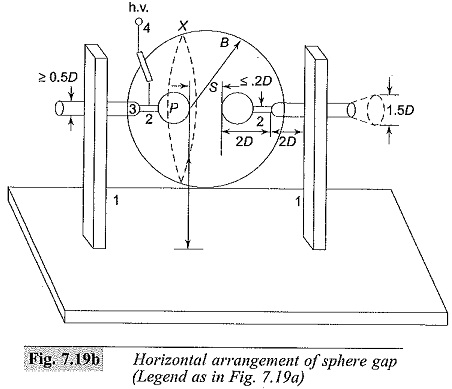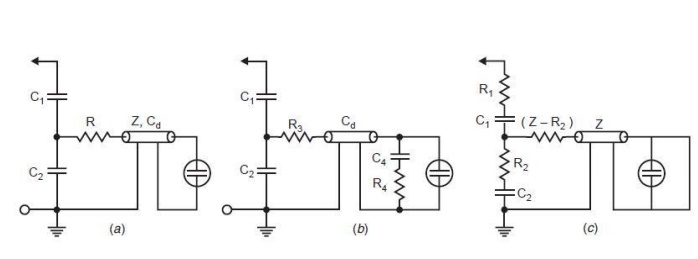

- Digital techniques in high voltage measurement plus#
- Digital techniques in high voltage measurement series#
However, those with large rotating machinery or motors require noise immunity at higher frequencies. This is equivalent to a 10 times better attenuation of 60 Hz noise.Īny application may benefit from rejecting 60 Hz noise.
Digital techniques in high voltage measurement series#
For example, Figure 3 shows the CMRR for a low-cost M Series device compared with that of an industrial M Series device.įigure 3: The NI 6230 provides a much higher CMRR than the NI 6220 relative to earth ground.Īt 60 Hz, NI 6230 industrial M Series devices have 20 dB greater CMRR than NI 6220 low-cost M Series devices. The CMRR is the ratio of the measured signal gain to the common-mode gain applied by the amplifier, as noted by the following equation:Ĭhoosing a DAQ device with a better CMRR over a broader range of frequencies can make a significant difference in your system’s overall noise immunity. A practical device, however, specifies the degree to which it can reject common-mode voltage with a common-mode rejection ratio (CMRR). Such a system would completely reject any AC-coupled noise. In all cases, a time-varying common-mode voltage is coupled onto the signal of interest, most often in the range of 50-60 Hz (power-line frequency).Īn ideal measurement circuit has a perfectly balanced path to both the positive and negative terminals of an instrumentation amplifier. If the electromagnetic field source is far from the measurement circuit, such as with fluorescent lighting, the electric and magnetic field coupling is considered combined electromagnetic or radiative coupling. Inductive or magnetically coupled noise results from time-varying magnetic fields, such as those created by nearby machinery or motors. Capacitive coupling results from time-varying electric fields, such as those created by nearby relays or other measurement signals. Sources of AC noise may be broadly classified by their coupling mechanisms – capacitive, inductive, or radiative. This is particularly troublesome for low-level analog signals passing through the instrumentation amplifier on a DAQ device. Noise is inevitably coupled onto a measured signal from the surrounding electromagnetic environment. Most sources of common-mode voltage contain an AC component in addition to a DC offset. Rarely do common-mode voltages consist of only a DC level. To accurately measure the voltage of a single 1 V cell, the measurement device must be able to reject the high common-mode voltages generated by the rest of the stack. Each individual cell may generate approximately 1 V, but a stack of cells may produce several kilovolts or more. The maximum working voltage is now defined by the isolation circuitry instead of the amplifier input range.įuel cell testing is an example application that requires high DC common-mode voltage rejection. While the input range is the same as that in Figure 1, the working voltage has been extended to 60 V, rejecting 55 V of common-mode voltage.

For example, in Figure 2 the instrumentation amplifier ground reference is electrically isolated from earth ground. This decouples the maximum working voltage specification from the input range of the amplifier. Because current cannot flow across this isolation barrier, you can level-shift the DAQ device ground reference away from earth ground. An isolator passes data from one part of the circuit to another without conducting electricity. In the context of a measurement system, “isolation” means physically and electrically separating two parts of a circuit. Isolation can dramatically increase the maximum working voltage of a DAQ device. For example, low-cost M Series DAQ devices such as the NI 6220 devices have a maximum working voltage of 11 V no input signal can exceed 11 V without causing damage to the amplifier. The maximum working voltage for most DAQ devices is the same as the input range of the instrumentation amplifier.
Digital techniques in high voltage measurement plus#
The maximum working voltage of a data acquisition (DAQ) device refers to the signal voltage plus the common-mode voltage and specifies the largest potential that may exist between an input and earth ground. In Figure 1, 5 V is common to both the AI+ and AI- terminals, and the ideal device reads the resulting 5 V difference between the two terminals. Common-mode voltage is the voltage common to both the positive and negative terminals of an instrumentation amplifier. Practical devices, however, are limited in their ability to reject common-mode voltages. An ideal differential measurement device reads only the potential difference between the positive and negative terminals of its instrumentation amplifier(s). Making highly accurate measurements often starts with differential readings.


 0 kommentar(er)
0 kommentar(er)
